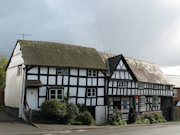 |
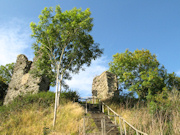 |
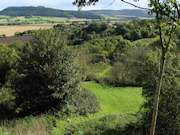 |
|
The castle is located a short distance from the
centre of the village, it is around half a mile away and is
signposted from the castle car park and village centre. The walk is a steady
uphill climb to the castle, muddy in sections at the time of our visit and
takes you past come of the ancient timber framed buildings in the village such as
the Post Office pictured above and through the churchyard of St. James'
Church. The small village is a popular place for tourists with
accommodation, pubs and a shop all in the centre. |
|
|
|
|
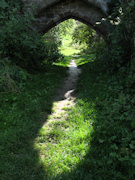 |
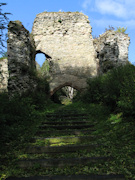 |
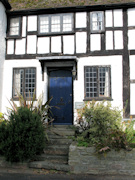 |
|
It can be a little confusing after leaving the
churchyard to determine which way the castle is from this point but if you
carry straight on uphill through the meadows you will eventually catch your
first glimpse of the castle ruins ahead before you approach the remains of
the gatehouse, (centre photograph above). There were no admission fees to
visit the ruins and dogs are permitted on the site. Not a lot remains of the
castle which dates back to Norman times and was built by William Fitzosbern,
one of William the Conqueror's Captains but what does remain gives you a
good idea of the scale of the castle which was one of the biggest in the
area. |
|
|
|
|
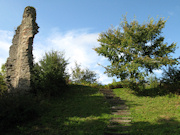 |
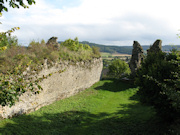 |
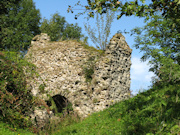 |
|
There are spectacular views across the
surrounding countryside from the castle which sits on a rocky mound. The
castle is in the care of English Heritage, a disclaimer before you enter the
castle grounds states, "Wigmore Castle and Lands are privately owned. The
owner has deeded the castle into State 'Guardianship'. The Secretary of
State delegates English Heritage to manage the castle." One million pounds
worth of works were carried out over the course of four years from 1995 to
1999 to ensure that what remains of the castle does not deteriorate any
further and find out more about the site which is thought to have had a
fortress long before the current castle was built. |

